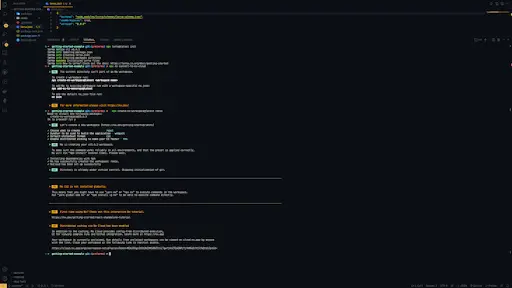
Do you want to hire Full Stack Developers who can build web applications from scratch?
Usually, you have to hire a team of developers specializing in various programming languages, frameworks, and libraries to build an effective web application.
But that’s not the case when you choose to hire a Full Stack Developer.
Full Stack Developers are not necessarily the experts of all the technologies available for web and mobile development. Then, what exactly is a Full Stack Developer? We are just about to explore.
What is a Full Stack Developer?
Full Stack Developers are programmers who can take care of end-to-end web development single-handedly.
They understand and possess the knowledge of the technologies required for front-end (the part where users interact with – client-side), back-end (server-side) development, and database development.
While there are Full Stack Developers who are quite good at everything, they don’t necessarily have to master all the technologies. But they should understand every process of web development and are highly interested in all the technologies.
Front-end Technologies for Full Stack Developers
HTML/CSS and JavaScript rule the front-end domain.
JavaScript frameworks like Angular, React, Vue.js, and Ionic; and CSS frameworks like Bootstrap, Foundation, and Tailwind are some of the leading front-end technologies for development.
Further, it is necessary to understand and have command over some of the frameworks and third-party libraries like jQuery, Less, and Sass.
Back-end Technologies for Full Stack Developers
NodeJS, Python, Ruby, Java, and PHP are some of the most preferred back-end programming technologies.
While developers have their reasons and inclinations to choose the back-end language, all these languages have high demand in the market.
Database for Full Stack Developers
All web applications require database access to store and access data. After all, the consumer’s requests would require you to store and fetch the data. But knowing any database wouldn’t do.
A Full Stack Developer has to understand Relational and NoSQL Databases to deploy based on the usage and requirement.
MySQL, PostgreSQL, MariaDB, and OracleDB are some of the prominent relational databases.
MongoDB and DynamoDB are some fine examples of the NoSQL database.
Technology Stacks of Full Stack Developers
There is no one technology stack for a Full Stack Developer. Full Stack Developers can choose to learn technologies of various domains to build an application. Here are some of the prominent technology stacks of Full Stack Developers.
Full Stack Ruby on Rails Developers
Ruby on Rails is a server-side web framework that uses Ruby as a programming language for cost-effective and quality development.
For Front-End Development, Full Stack Ruby on Rails mostly depend on HTML, CSS, and JavaScript.
Ruby on Rails has many options for a database like MySQL, PostgreSQL, or SQLite (not in production as it doesn’t support concurrency).
Apart from being consistent, secure, and scalable, Ruby on Rails has many ready-made plugins that greatly increase the speed of developers reducing the need for boilerplate code. The stack is also known for easy code maintenance and debugging.
Full Stack Elixir Developers
Elixir is a functional programming language to build scalable and maintainable applications. It is also behind the development of the Phoenix framework which is famed for its reliability.
As a Back-End programming language, Elixir can be integrated with PostgreSQL, MySQL, MongoDB for a database; and HTML/CSS, Bootstrap, jQuery, JavaScript, React, Angular, and VueJS for front-end development.
Elixir’s concurrency handles the requests of multiple users in real-time simultaneously without any lags in function. Elixir is also highly scalable, fault-tolerant, easy to use, and has a strong developer community.
Full Stack Angular Developers (MEAN): MongoDB, Express, Angular, and NodeJS
MEAN Stack comprises of JavaScript technologies for development. From the client-side to the server-side, the programming entirely depends on JavaScript to build quality websites.
MongoDB: The open-source, cross-platform database that uses binary data type like JSON is probably the best choice to manage large sets of data.
Express: It is a highly flexible and light-weight web server framework for robust web applications.
AngularJS: The open-source framework incorporating MVVM architecture enables developers to build smarter and faster web applications.
NodeJS: An open-source, cross-platform and server-side technology to build highly scalable web applications.
Full-Stack React Developer (MERN): MongoDB, Express, React, and NodeJS
MERN stack replaces AngularJS with ReactJS while retaining the other technologies of MEAN: MongoDB, Express, and NodeJS.
React gives a better developer experience, saves time, fastens development and testing. It is highly stable as it employs one-directional data binding.
Full-Stack VueJS Developer (MEVN): MongoDB, Express, React, and VueJS
Yes, MEVN replaces Angular with VueJS. Vue is much younger than React and Angular and offers superior and bug-free performance. Vue is also the lightest of all but doesn’t have a tech giant’s backing.
LAMP or Full Stack PHP Developer
LAMP remains highly preferred for Linux hosted websites and web applications.
Linux: Open-source operating system
Apache: Open-source cross-platform web server software to act as a link to the back-end and the database.
MySQL: Open-source relational database system.
PHP: An open-source scripting language for the server.
Full Stack Python Developers
Python is an object-oriented, high-level, general-purpose language best for building highly scalable, responsive, and productive applications.
It is mostly used with PostgreSQL or MySQL for database, but can also work well with MongoDB.
HTML/CSS, Bootstrap, jQuery, JavaScript, React, Angular, and VueJS are some of the front-end languages developers can choose from to use with Python.
Full Stack Java Developers
Full Stack Java Developers completely understand Java-based languages and integrate with compatible database and framework for development.
Front-End: HTML, CSS, JavaScript, and JS frameworks like Angular, React, and Vue.js.
Database: MySQL, PostgreSQL, and MongoDB
Web Server: Apache and Database Servers
Back-End: NodeJS, Spring, and other ORM frameworks like JPA and Hibernate
Why Hire a FullStack Developer?
Full Stack Developers as Technical Leads
Full Stack Developers make excellent Technical Leads and Project Managers.
Business Managers might not understand every technicality of developing. But Full Stack Developers understand the project from the engineering perspective and can get the team to work efficiently.
Further, they understand every layer of development. This enables them to make the right schedules and plans for the resources.
Hiring Full Stack Developers is Cost Efficient
Hiring a Full Stack Developer is costly when compared to hiring a domain specialist. But an application is not just front-end or back-end; it’s a combination of many.
So when compared to hiring a team of domain experts – at least three developers – a Full Stack Developer is a way better option.
Full Stack Developers are Flexible
Full Stack Developers are ideal if you want someone to switch between the multiple projects assisting the teams whenever required.
They are perfect to be deployed even when the deadline is closing, or when the teams face errors and are struggling to overcome.
How to Evaluate a Full Stack Developer?
Technologies Full Stack Developers Understand
Your potential candidate must have a good grasp on at least one of the front-end, back-end, database, and web services technologies.
But it is always better if the candidate’s knowledge is not limited to just the tech stack.
Full Stack Developers Must be Curious
The candidate is curious and is interested in learning new things. Because FullStack developers have to keep themselves updated on the industry’s latest trends.
If developers possess the knowledge of the required technologies but don’t keep themselves up to date, they might not be the right fit for your company. After all, new languages and technologies are surfacing more frequently than it ever was.
Full Stack Developers Understand the Right Path of Execution
Being the one who understands a variety of technologies, a FullStack Developer should be able to recommend changes in the way the software development is proceeding.
The candidate should communicate and collaborate to assist the development and boost the productivity of the team as a whole.
Full Stack Developers See the Bigger Picture
Full Stack Developers should be far-sighted in terms of business. They should be able to grasp what and how the client wants the project to be completed.
A Full Stack Developer is probably the one to strategize and to set the strategies in motion. With the knowledge encompassing the business aspects, a Full Stack Developer can further bring more value to the company.
Wrapping Up
Although Full Stack Developers are the masters of a specific web development technology, they make up with their adaptability, versatility, and flexibility in programming.
They can also easily build light-weight applications faster while still ensuring high quality. A Full Stack Developer is the jack of all trades and a master of a few of the technologies.
So if you want someone who can get into the software development at any point in time and take over the development in full swing, a Full Stack Developers is what you need.
Source link






Leave a Reply